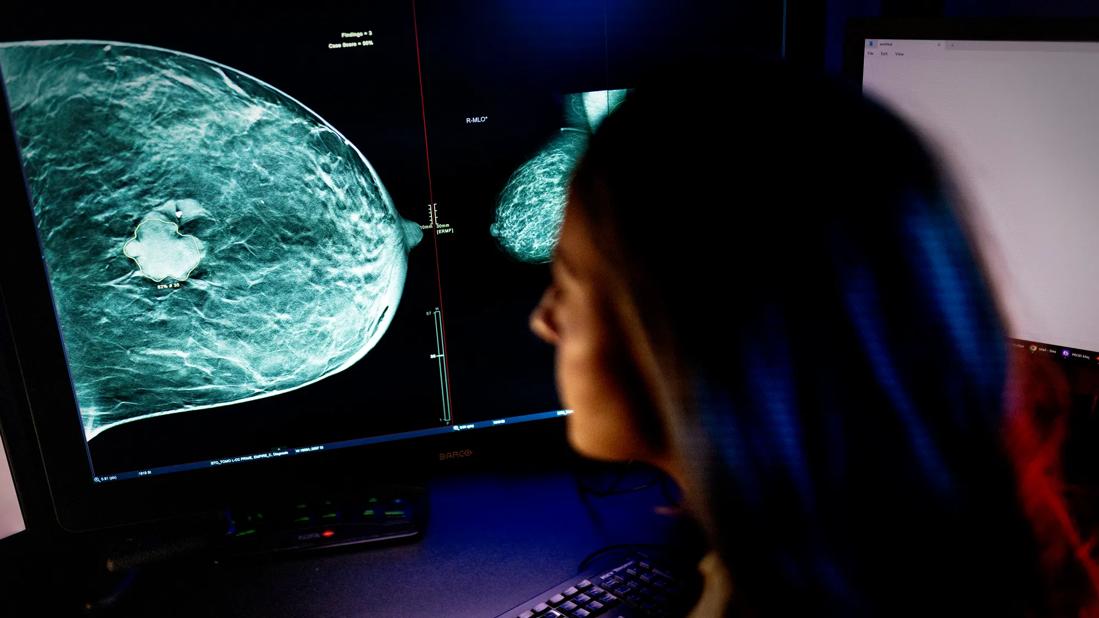Preoperative treatment ensures successful surgical resection

A 61-year-old woman with a history of breast cancer was seen by a local oncologist after developing irregular purplish lesions on her chest. The patient underwent a biopsy, which revealed angiosarcoma – a finding associated with the radiation treatment she received during her previous breast cancer diagnosis 7 years earlier. Given the complexity of her disease and required treatment, she was referred to Cleveland Clinic for evaluation.
Advertisement
Cleveland Clinic is a non-profit academic medical center. Advertising on our site helps support our mission. We do not endorse non-Cleveland Clinic products or services. Policy
“This case was complicated for a number of reasons,” explains Chirag Shah, MD, a radiation oncologist in Taussig Cancer Institute and Director of Clinical Research in the Department of Radiation Oncology. “Angiosarcoma is a relatively rare and aggressive malignancy, so successful treatment demands a high level of expertise in several disciplines. If not treated early, the lesions can spread locally and/or metastasize rapidly and lead to a host of serious complications, including bleeding in the breast.”
The management of angiosarcoma can be especially challenging because the process may involve chemotherapy, repeat radiation, surgical resection, and even tissue reconstruction.
“In particular, many clinicians are uncomfortable treating the breast with repeat radiation, which is why cases like this one often get referred to large cancer centers for evaluation,” he says. “These cases can also be tricky because the best therapeutic approach is completely dependent on the specifics of each patient. There’s no one-size-fits-all solution.”

At Cleveland Clinic, the patient underwent a staging assessment and was evaluated by a multidisciplinary team of specialists, including medical oncologists, radiation oncologists, and surgeons. Concerned about the cancer’s rapid growth, the medical team began with a course of outpatient radiation therapy (60 Gy) three times daily for 4 weeks. The daily treatments were administered 4 hours apart.
“It is exquisitely uncommon for a patient to receive radiation multiple times a day over the course of several weeks,” explains Dr. Shah. “A treatment regimen like this demands a battery of technical considerations and significant staffing resources. It’s an exhausting, potentially painful course of therapy, so these patients really rely on their caregivers and support services to see them through. Toward the end of her treatment, this patient required almost daily wound care – a serious concern that required substantial nursing support.”
Advertisement
The patient underwent surgical removal of the affected breast eight weeks after she received her final radiation dose. Clinicians hoped the time frame would give the patient’s normal tissues time to repair. Only a small area of residual cancer was seen during the surgery.
“Angiosarcoma is like a weed – you can see the top of it, but it’s very difficult to gauge the depth of the root,” notes Dr. Shah. “In such cases, we often use wide margins when resecting the cancer to make sure we get it all.”
The patient was closely monitored with physical exams and CAT scans of the chest; she was seen every 3 months for the first year and every 6 months for the second year. At her last follow-up appointment in 2021 (2 years post-treatment), she was disease-free.
“Most patients who require radiation of the breast breeze through the treatment, but this case was far riskier and more demanding,” concludes Dr. Shah. “The success of this case really comes down to the personalized, coordinated care the patient received. We were with her every step of the way.”
Advertisement
Advertisement

Radiation oncology department finds weekly plan of care meetings have multiple benefits

Identifying candidates for further screening and treatment

Screening also found to be cost-effective

Research highlights promising outcomes for treating recurrent and metastatic cases

Correlation found between the biomarker HSD3B1 and resistance to combined hormone therapy and radiotherapy

Meta-analysis suggests efficacy and safety

Transperineal ultrasound a viable, non-invasive option for monitoring intra-fractional prostate motion

Multidisciplinary team to examine radiation therapy combined with immunotherapy